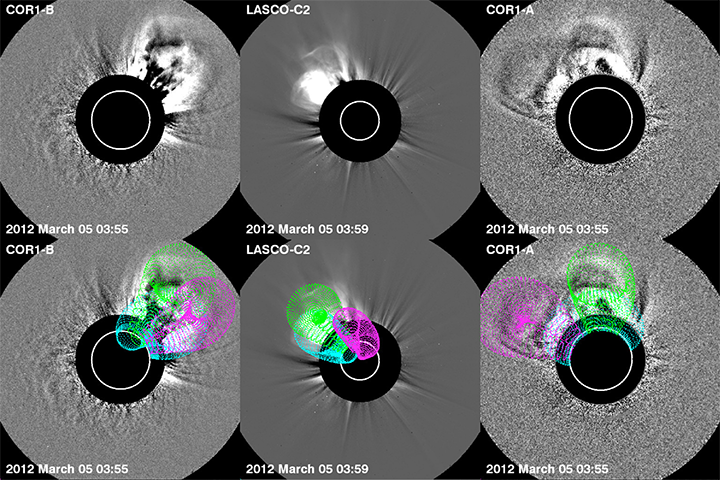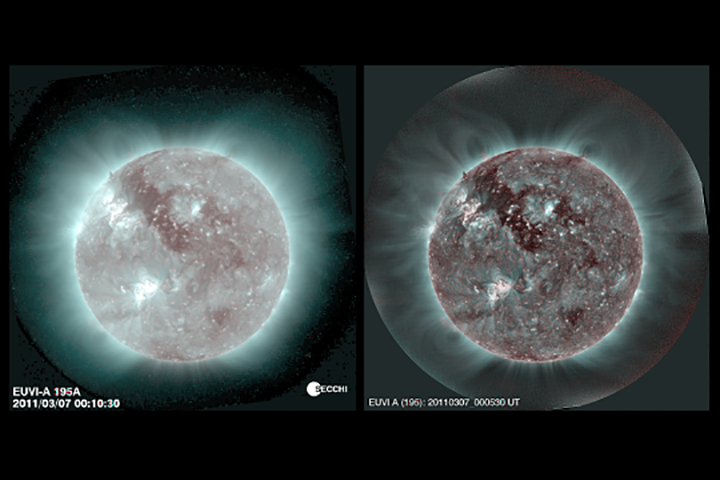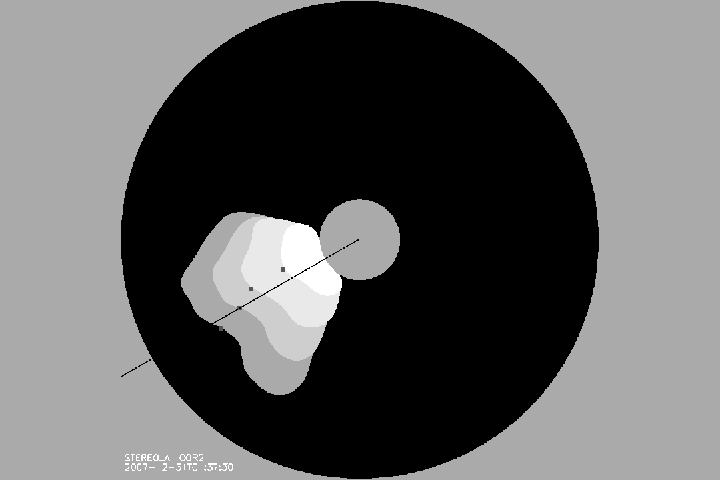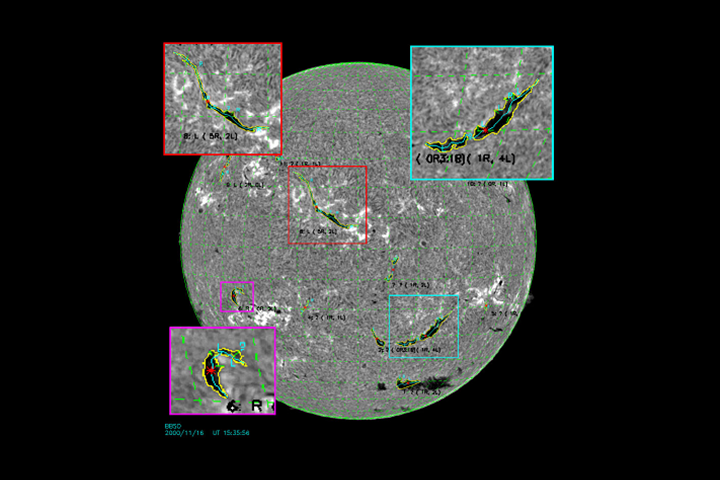3-D Reconstruction
- Software: The 'scraytrace' package (under the SECCHI distribution in IDL SolarSoft). Developer: Dr. A. Thernisien (NRL)
- Reconstruction based on forward modeling. User choses a shape to represent the target object (e.g. ellipsoid for a shock, Graduate cylindrical Shell for a CME, slab for a streamer, etc.) and visually fits it in 2 or 3 near-simultaneous images.
- Works for EUV and white light images.

3D reconstructions of three overlapping CMEs using 3-viewpoint observations from the SECCHI and LASCO coronagraphs. (from Colaninno & Vourlidas 2015; Credit: NRL/NASA).
Wavelet-Enhanced Images
- Developer: Dr. G. Stenborg (NRL). See Stenborg et al. (2008) for details or contact Dr. Stenborg.
- The full STEREO EUVI archive in 4 wavelengths (17.1, 19.5, 28.4, 30.4 nm) is available online.
- Monthly 2-color movies (17.1/19.5, 28.4/30.4, 171.4/30.4) at 2-hr cadence are available here.
- The algorithm works equally well for SDO/AIA images. Examples are available in our gallery.

Example of STEREO-A EUVI '2-color' composites combining EUV images at 30.4 nm (red) and 19.5 nm (blue). Left: images processed with standard Solarsoft EUVI calibration. Right: Images further enhanced with wavelet decomposition. (Courtesy: Dr. G. Stenborg, NRL).
Supervised Image Processing
- Developed for tracking CMEs in LASCO and SECCHI/COR2 by N. Goussies & G. Stenborg (Goussies et al. 2010).
- Used in the Multi-Viewpoint COR2 (MVC) Catalog to extract CME properties.

Example of tracking the CME envelope (grey contours), position angle (solid line) and direction (stars) in successive images via an automated algorithm. (Credit: L. Balmaceda & NRL/NASA).
Automated Filament Detection
- Developed by P. Bernasconi to detect and track filaments on the solar disk and extract parameters such as chirality using Hα images (Bernasconi et al. 2005).
- The Advanced Automated Filament Detection and Characterization Code (AAFDCC) is part of the SDO Computer Vision project and has been running since 2010 (see Martens et al. 2012, for details)

Automated filament identification (from Martens et al. 2012. Credit: Elsevier)